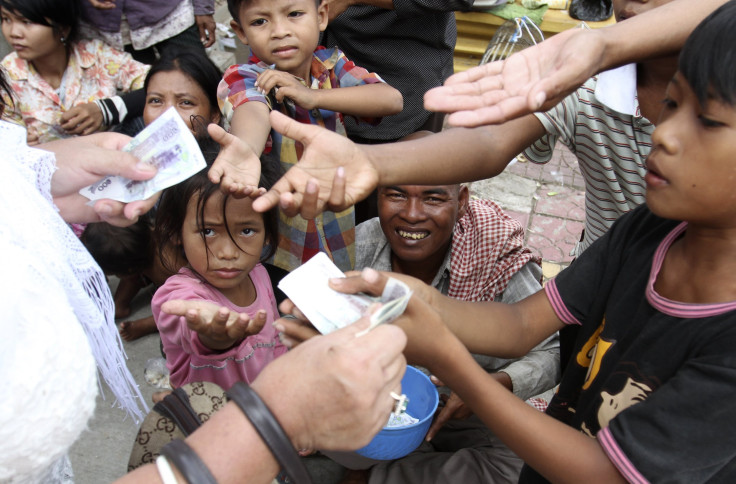Cambodia's Informal Money Lending Is Competing With Banks And Microfinance Institutions

Despite the rapid development of the banking sector in Cambodia, informal, unlicensed money lending, especially in rural regions, is still thriving and unfairly competing with banks and microfinance institutions (MFIs).
Cambodia’s banks have done well in recent years. ACLEDA, the country’s largest bank, now has 238 branches and presence in every province. Loan portfolios of the 35 registered MFIs and four NGOs that are members of the Cambodia Microfinance Association reached $1 billion at the end of the first quarter, a 41 percent increase from the same period last year, according to Phnom Penh Post, a Cambodian newspaper based in the capital city of Phnom Penh.
Even so, informal lending is still very much a part of Cambodia’s financial market.
“While there has been an increasing number of banks and MFIs, many farmers continue to rely on informal credit and the private money lender in their village,” said Vorn Pao, president of the Independent Democracy of Informal Economy Association, a group representing workers in informal sectors such as transportation.
According to a study of rural and urban consumers conducted in June by Indochina Research, five out of 10 Cambodian households that have at some stage borrowed money still access informal sources of credit.
The actual figure could be even higher, as these informal loans are hard to measure completely, Phnom Penh Post reported.
“This confirms that informal lending still plays a significant role as an alternative access to funding in Cambodia,” Karl Johan Remoy, general manager of Indochina Research (Cambodia) Ltd, said. “However, as people are reluctant to talk about habits concerning usage of informal loans, we have to assume that the actual incidence is higher than what we are able to register in our survey.”
Informal lending provides a number of incentives for people in need of money. For one – it is fast and easy. “Borrowers and money lenders know each other on a first name basis, residence, credit history, etc, and do not require borrowers to fill out application forms,” Kang Chandararot, director of the Cambodia Institute of Development Study, said. Chandararot added that turning to private money lenders satisfies an impulse to “save face” and appear solvent.
The practice, of course, is not without its risks. Very often informal loans are laden with high interest rates far surpassing rates offered by banks and MFIs, and could easily snowball into exorbitant amounts.
People take an average of one to two million riel ($250 to $500) with a monthly interest rate of 10 percent. Meeting payment deadlines often become difficult, Phnom Penh Post reported.
“Many have lost their cow, ox, or other property because of multiple loans from formal and informal lenders,” Pao said.
Informal lending operations also affect the development of Cambodia’s banking sector, by creating unfair competition.
“We are not happy with the existence of the informal money lending sector,” said Bun Mony, president of the Cambodia Microfinance Association. “Because this is unfair competition . . . with regulated institutions, you pay all the fees, all the tax. But [informal] money lending, they pay none. So they get only profit for themselves.”
A possible solution is to implement a law that prevents courts from accepting lawsuits by informal money lenders against borrows, Mony suggested.
But such a move wades into the uncertain territory of categorizing informal lending and applying laws to regulate its practice.
“When you borrow some money from someone in a bilateral agreement without a notary or without anything, it is just based on the trust between the two people and if anything happens, then it’s not under the central bank supervision,” said Nguon Sokha, the Director General of the National Bank of Cambodia.
Chandararot also dislikes the idea of going after the informal lending sector, according to Phnom Penh Post.
It poses “no risk to the economy and can make a financial system more flexible to demand,” Chandararot said. “Informal money lending is still filling a gap that formal institutions have not reached.” “The rate of uncertainties is Cambodia is too high, such as unemployment, market risk, price risk. Therefore, people still need a financial source that can quickly help them out when they encounter such shocks.”
© Copyright IBTimes 2024. All rights reserved.











